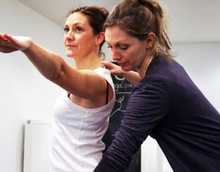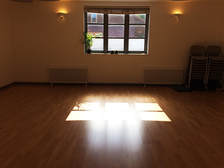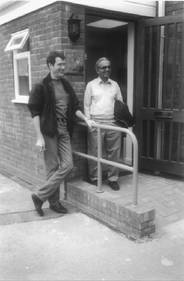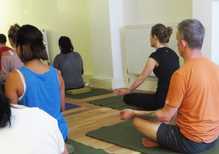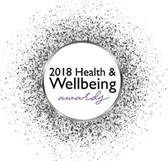Vitality & DiscoveryAt Bristol YogaSpace we teach yoga to support health, vitality, wellbeing, and a calm steady mind which can ease stress and lead to a greater connection to yourself and others.
Each yoga teacher at YogaSpace brings their own unique approach to this from a traditional viewpoint. The well of knowledge that we all draw from is physical and meditative practice which is breath-centred and adapted to individuals to suit a wide range of health needs and mobility - a 'viniyoga' approach to yoga. ViniyogaWord origin: Sanskrit
Vi = special application Ni = placement of yoga Viniyoga = yoga adapted to suit individual needs Slow downWe slow down (I mean really S L O W down) to help counterpose our fast-paced lives. Slowing the body and breath supports slowing our minds, creating a space and pause in our lives, and returning to a more balanced state.
MoveMoving our bodies is important for good physical and mental health and brings us our of our turbulent minds. Move slowly, perhaps stay in some poses, and improve health, strength, stamina, vitality, self-awareness.
BreatheBreath centring helps us to steady the body and mind. Breath-centred yoga offers a safe way to practice the physical postures. Our breath acts as our personal guide to help us understand which yoga practices are suitable (not everything suits every body). The art of breathing is cultivated over time, so be patient as you get the hang of the ways that we can use the breath. It can be powerful and transformative.
Adapt yoga to suit youGain an understanding of what works well for you and what can be adapted to support you better. We encourage individual adaptations to help your enjoyment, health, skill and stamina. Our smaller group sizes and experienced teachers are great at this.
Viniyoga isn't as much a 'style' of yoga, as an approach to your yoga practice that can be applied to whatever form of movement or breathing that is helpful to you. The viniyoga approach to yogaWork at your own paceThe viniyoga pace is slower than some modern styles of yoga to help develop skill within the practice and explore suitable modifications to the movements and postures.
Find your ideal practiceIt supports self-exploration and understanding of your own yoga practice. We prioritise function over the form of the practice. It is great for therapeutic practice as it is so adaptable to the needs of each person.
Easy to practice at homeThere is a simplicity along with depth and discipline to viniyoga
Styles of yoga - summaryBelow is a summary of common styles of yoga you may have come across to give you a flavour of the kinds of yoga classes that are generally available. Many can feel quite similar, some can feel very different, so finding a style and a teacher that you feel comfortable with is a very personal decision.
Different styles generally have different emphasis on how they use the body, breath, meditation and other techniques in the class. Every teacher will in some ways have their own style depending on their own experience and what they feel it is important to teach. ViniyogaA method of applying yoga developed by Krishnamacharya and his son TKV Desikachar
A slower paced approach to yoga practice that is breath centred and therapeutic in its orientation. It is based on the principles of finding suitable adaptations and modifications in poses, breath and focus to suit the student and their aims. The breath is a primary focus and each posture is centred around the breath from lesson one. Improved health and vitality in an accessible way, wellbeing and calmness of body and mind are signatures for this approach to yoga practice. The group classes tend to be smaller to enable the teacher to develop a relationship to the students in the room and adapt the practices appropriately. One-to-one work is helpful to develop a truly personalised yoga practice. Philosophically it is underpinned by the Yoga Sutras of Patanjali. Hatha YogaNot a brand or method developed by an individual, this term is generally used as a catch-all term for physical yoga.
Hatha Yoga is typically used as an umbrella term for many approaches to yoga practice. In a typical Hatha Yoga class, you will usually learn classical yoga postures, breathing techniques, relaxation methods and meditation. It is sometimes gentler depending on the teacher. Usually the classes aim to achieve an overall calming effect and feeling of well-being and develop a practitioners physical strength, flexibility and awareness. Philosophically underpinned by the classical Hatha Yoga texts such as the Hatha Yoga Pradipika. Ashtanga YogaMethod of practice developed by Pattahbhi Jois and Krishnamacharya
Ashtanga Vinyasa Yoga is a physically challenging, energetic form of Hatha yoga. It includes strong, flowing postures in set ‘vinyasas’ or sequences that you will learn and develop over time with a strong, mid-paced breath. It usually starts with Sun Salutations and then develops through a primary series of postures, a core repertoire that is challenging for both strength, flexibility and focus. If you get that far, there are also further series’ of postures to learn. You should be prepared to sweat as it is intensely physical but deeply rewarding if you have the time and dedication to take regularly and it suits your body. It requires commitment and consistent regular practice to be safe and is best suited to the younger body. The skill of the teacher is key in this style of practice as it is a physically demanding and if not taught carefully, potentially risky. Philosophically underpinned by the Yoga Sutras of Patanjali and the 8-limbs of yoga. Iyengar YogaMethod of yoga originated from BKS Iyengar .
This method for practicing Hatha yoga focuses on using precise alignment of yoga postures with a strong body focus (rather than breath focus) for the first few years of practice. A wide range of props are used including blocks, bricks, belts and bolsters to help practitioners achieve alignment that BKS Iyengar considered suitable for most bodies in the poses. The class is slower paced to allow time to be spent in each pose finding set alignment teachings and offering detailed bodywork. The yoga classes are usually challenging physically and mentally and end with a lie down to rest. Philosophically underpinned by the Yoga Sutras of Patanjali . Vinyasa Flow or Hatha Flow YogaContemporary practice style inspired from the original Ashtanga Vinyasa yoga
A flowing, dynamic and faster paced form of Hatha yoga coordinating the movements together using the breath. The vinyasas or sequences of postures will vary according to the teacher and often the practice is strong, physical and focusing. Some teachers also use breathwork to intensify practice. Hatha flow yoga is typically slightly slower and gentler than Vinyasa flow but it depends on the teacher. Teachers typically have a shorter teacher training of a few months or even a few weeks, so if you have health issues ensure you are able to manage your body safely before starting. Creative and varied practice, enjoyable for well coordinated students and often accompanied by music. The philosophical underpinning varies according to the teacher. Yin YogaYoga method developed by Paulie Zinc based on martial art training and Hatha yoga
This approach of long holds in a pose (2-5 mins) is not unique to Yin Yoga but a Yin class focuses on long holds in each posture all the way through and does not integrate them into a broader range of movement in a class as other methods might do. It is usually offered as a complementary class to more physically demanding yoga methods. Long holds in passive floor postures using blocks and bolsters aim to usefully stress the connective tissues in the body to increase strength and flexibility. The method of yoga practice is underpinned by the Taoist philosophy. Gentle YogaGentle yoga generally means a more accessible yoga class that offers time and exploration to find a way of practicing yoga that will accommodate health issues and injuries. It is also encourages a mindset of not pushing or being aggressive with your yoga practice but allow it to unfold and support you. Usually it offers space and time for subtle yoga practice beyond just physical postures.
Restorative YogaRestorative yoga is a general term used to offer a more gentle class often using props such as bolsters and blankets to support some of the poses. It is typically a slow class where poses are held for long, sometimes poses can feel strong if held for a long time. The focus is often on unwinding and relaxation to help restore you from the stresses of everyday life.
Bikram Yoga or Hot YogaBikram Yoga method developed by Bikram Choudhury
Bikram yoga is a franchise brand that offers a fixed series of 26 poses and 2 breathing practices which are undertaken in a super heated room of around 42 degrees. Classes last 90 mins, are intense physically and psychologically due to the heat. Bright rooms, loud classes with a mic on the teacher and direct instructions to ‘lock the knee’ and 'push the pose' learned from a script that Bikram wrote himself. Hot Yoga A super heated room still but not part of the Bikram franchise so the postures vary from his set 26. The postures in hot yoga can be more varied depending on the teacher. In both you’ll sweat like never before and should come hydrated to class and bring your own mat and towel. This form of practice requires regular attendance to keep up the stamina and climate tolerance required. A bit of a marmite class – if you like extreme heat and intense experiences you might love it. Pregnancy or Pre-natal YogaYoga that has been adapted to be able to be practiced safely throughout the second and third trimesters of pregnancy, prepare for the birthing process and for motherhood. Pregnancy yoga is taught by teachers are specially trained and can provide physical and psychological support, promote calmness and relaxation thoughout, help alleviate some of the discomforts of pregnancy, and support you to have an active and healthy pregnancy. Some teachers are more focused on birth preparation, others more on pregnancy support (some focus on both).
Pregnancy yoga is generally taught in specialist groups, however pregnant women can also attend general yoga classes as long as the teacher is skilled in adapting the class to suit pregnancy. Check with the teacher first before going. Find out about our Pregnancy and Prenatal Yoga Classes here > Yoga TherapyYoga can be extremely helpful in addressing a wide range of health conditions, but it must be applied with careful consideration towards the person wishing to practice it. The practice of yoga will be individualised for them, and it is typically taught in a one-to-one setting or in very small group classes. Postures will be carefully explored and introduced and gradually the yoga practice will develop to work towards the aims of the practitioner. This way of teaching yoga requires greater skill and experience than a usual group class teacher and special training is very beneficial. The teacher and the student will work together to figure out what is the best approach to yoga practice and typically home practice is required by the student to gain the benefits.
Find out about Yoga Therapy at Bristol YogaSpace here > Scaravelli YogaYoga approach inspired by Vanda Scaravelli
Typically called Scaravelli ‘inspired’ yoga classes are an explorative way of approaching yoga postures through your own personal movement patterns. The movements in the class are primarily spine based and develop body awareness as the poses are approached slowly while easing excess effort and tension along the way. Kundalini YogaYoga approach brought to the west by Yogi Bhajan
Kundalini yoga class typically involves dynamic body work, intense breath techniques and guided meditations to feel very energised and awake. It typically uses a range of intensifying breath techniques and repetitious movements. Its philosophical underpinning originates from a synthesis of many traditions including hatha yoga, tantric yoga, and typically includes some esoteric teachings. & lots more...There are lots more flavours of yoga practice out there. They generally all use body, breath and mind practices to support health, wellbeing and some have other focuses. Talk to your yoga teacher to find out more. .
|
|
|
Bristol YogaSpace Ltd
Princes Place, Bishopston Just off Gloucester Road Bristol BS7 8NP |
|
© copyright 2024. All rights reserved.


